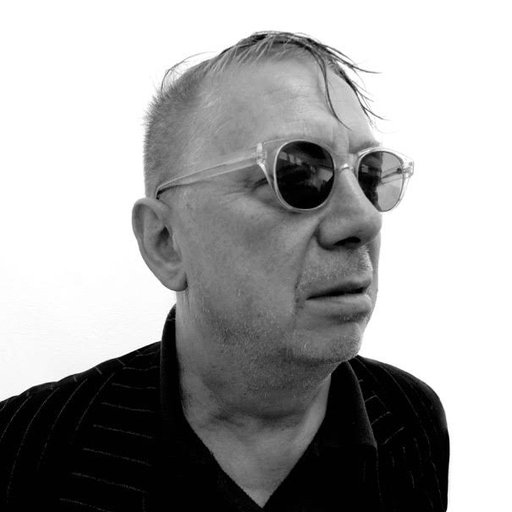Rudolf Polanszky
Considered a key figure in the Actionist and Post-Actionist movement in the Viennese Art Scene, Polanszky influenced and worked alongside artists such as Franz West and Dieter Roth. In 1976, with the film On a Semiology of the Senses and his first conceptual series titled Lard Drawings, Polanszky’s career was established. His practice developed through the observation of how behavior is unconsciously guided or, in his words, “externally directed.” He restricted himself to certain methods as a means of examining and formulating the structures of “process-dependent” results through the use of collage and assemblage. Polanszky’s early series, such as his Lard Drawings, Animal Print Pictures, and Spring Paintings, dealt explicitly with the tensions between planning and randomness in the artistic process. For example, to create his Spring Paintings, Polanszky jumped on a coil spring while holding a paintbrush and periodically touching paper with it, thus presenting a confrontation between the dynamic of the spring and the artist’s own skill.
Alongside these quasi-scientific experiments he also produced works in Super 8 film and video. Italian curator Francesco Stocchi has referred to Polanszky as “a philosopher disguised as an artist” who knows well enough that “productive answers are …
Considered a key figure in the Actionist and Post-Actionist movement in the Viennese Art Scene, Polanszky influenced and worked alongside artists such as Franz West and Dieter Roth. In 1976, with the film On a Semiology of the Senses and his first conceptual series titled Lard Drawings, Polanszky’s career was established. His practice developed through the observation of how behavior is unconsciously guided or, in his words, “externally directed.” He restricted himself to certain methods as a means of examining and formulating the structures of “process-dependent” results through the use of collage and assemblage. Polanszky’s early series, such as his Lard Drawings, Animal Print Pictures, and Spring Paintings, dealt explicitly with the tensions between planning and randomness in the artistic process. For example, to create his Spring Paintings, Polanszky jumped on a coil spring while holding a paintbrush and periodically touching paper with it, thus presenting a confrontation between the dynamic of the spring and the artist’s own skill.
Alongside these quasi-scientific experiments he also produced works in Super 8 film and video. Italian curator Francesco Stocchi has referred to Polanszky as “a philosopher disguised as an artist” who knows well enough that “productive answers are to be found in the questions.” The result of Polanszky’s work is complex and physically unfolds through transformation, non-linearity, symmetries, and “ad hoc syntheses.”
Solo exhibitions of Polanszky’s work have been presented at Fondazione Morra Greco in Naples, Galerie Andreas Huber in Vienna, Ancient & Modern in London, and Kubinski & Co in Berlin. His films and videos have been screened at Museum of Modern Art, Centre Pompidou, Boston’s Museum of Fine Arts, and Carnegie Museum of Art in Pittsburgh. His work has been included in group exhibitions at institutions such as Kunsthalle in Vienna, Konsthall in Malmö, and Nouveau Muséee National de Monaco.
Courtesy of Denis Gardarin Gallery

Belvedere, Vienna, Austria
Landessammlungen Niederösterreich, St. Pölten, Austria
Kadist Art Foundation, Paris, France
Artothek des Bundes, Vienna, Austria
Denis Gardarin Gallery, New York, NY
Galerie Andrea Huber, Vienna, Austria
Ancient & Modern, London, UK




